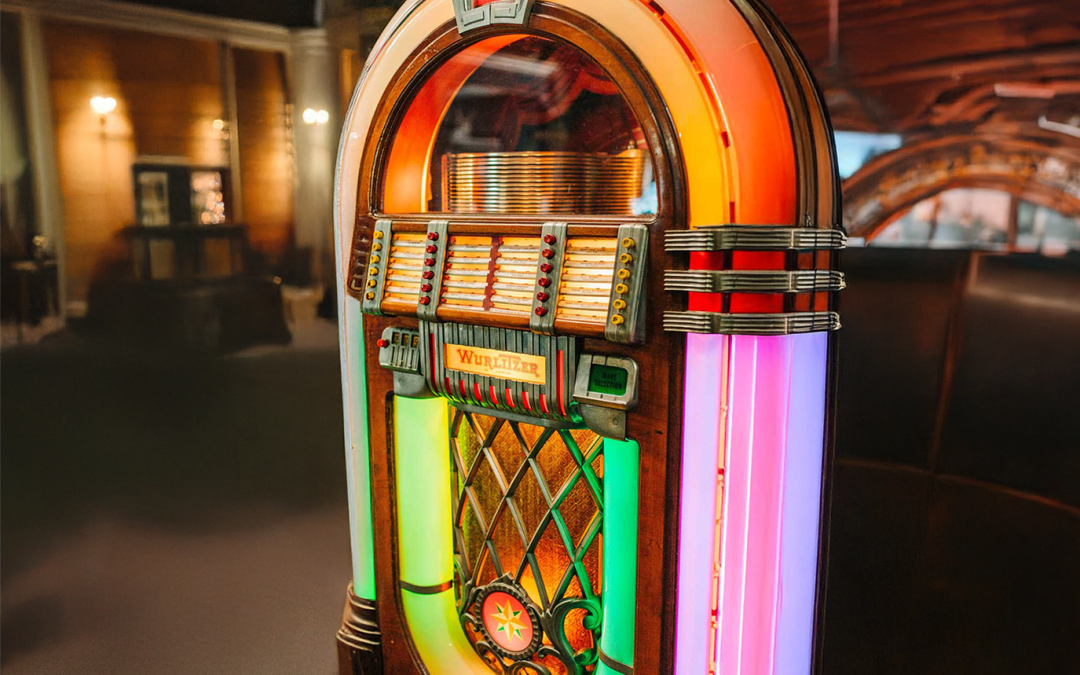A classic Wurlitzer 1015 model. Created in 1946, it is the biggest selling jukebox in history. (Image courtesy of The Men’s Cave)
May 2025
Cover Story
“A nickel’s worth of fun”
Jukeboxes spin the tunes and create memories
by Corbin Crable
The jukebox remains one of the most beloved symbols of midcentury America. If you have a coin in your pocket, you have the ticket to crafting a magical, musical memory, complete with tapping toes and a song on your lips.
A revolution in sound
At more than a century old, jukeboxes are just one in a long line of technological innovations that have moved the music industry forward since the Industrial Revolution. Their precursor, the phonograph, was invented by American inventor (and household name) Thomas Edison. The phonograph, which Edison patented in 1877, featured a recorded message etched onto the tiny indentations of a tin foil-covered cylinder, which was then played by turning a crank handle and allowing an attached needle to fall on each of the indentations to play the completed message. Nearly a decade later, inventor Alexander Graham Bell would later improve upon Edison’s invention by covering the cylinder in wax and using a floating stylus instead of a rigid needle. This device, which Bell named the graphophone, offered a clearer, cleaner sound.
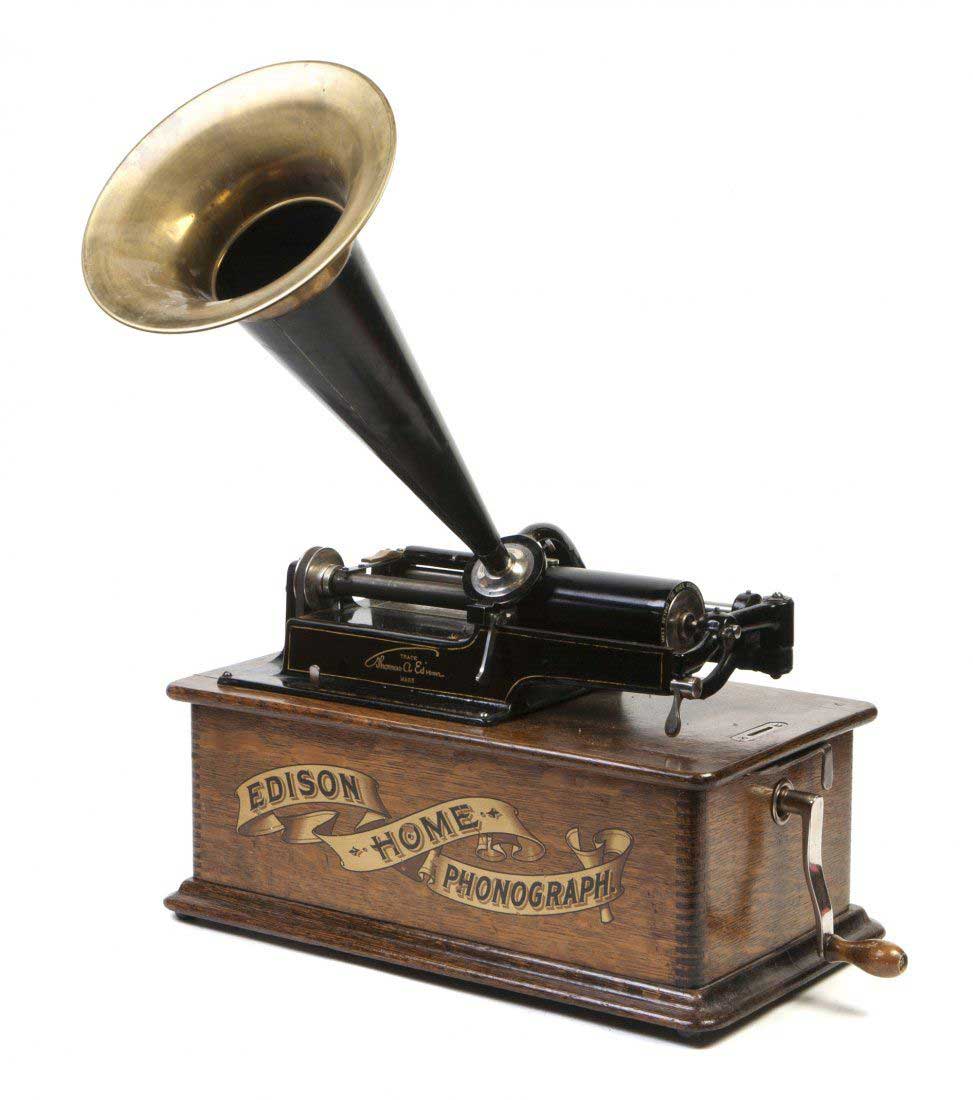
Thomas Edison’s phonograph
Thomas Edison’s phonograph, the precursor to the modern-day jukebox. (Image courtesy of The Men’s Cave)
In 1889, another inventor by the name of Louis Glass created a device considered to be the first type of jukebox, though it looked absolutely nothing like the jukeboxes we have come to recognize today. Glass’ creation was “large and clunky,” according to an article on the website for Victrola.
“Additionally, since a listener could only play one cylinder at a time, the music options were limited because each change was done manually,” according to the Victrola article. “To get the traditional jukebox to work in public spaces, it required inserting a token or coin to activate its operation, much like a vending machine. Though the sound quality was poor and the workings of the machine itself cumbersome and inconvenient, the novelty was enough to inspire other inventors to improve upon this original contraption.”
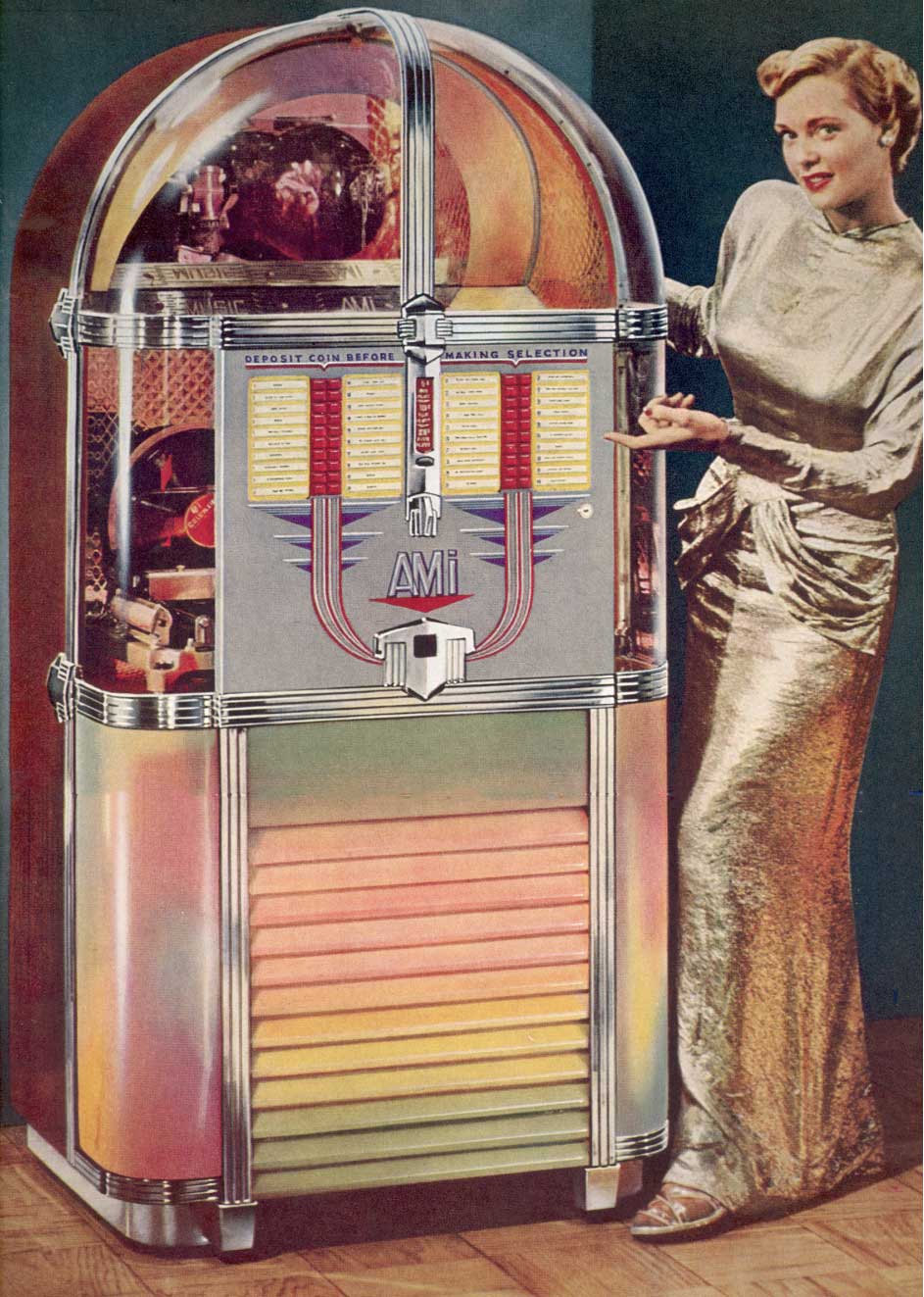
First jukebox in 1927
The Automatic Musical Instruments Co., or AMI, produced its first jukebox in 1927. Its popular Model C, with its futuristic design, came out in 1949 and enjoyed brief popularity in the early 1950s. (Image courtesy of Jukebox History)
Entertainment at the push of a button
The dawn of the 20th century saw those days of tedious disc changes end; by 1906, units like the “Automatic Entertainer” could play 24 different selections on 10-inch discs, according to the National Center for Families Learning’s education website Wonderopolis.org.
Individuals who rose to the challenge of improving upon the invention included Justice Seeburg – a Swedish immigrant whose company began producing jukeboxes in the mid-1920s — and the members of the Wurlitzer family, German immigrants whose company began making pianos and organs but who would become better known for their jukeboxes starting in the early 1930s.
These early 20th century jukeboxes not only allowed for speedy music changes and better sound; their design was appealing to the eye, too, with Seeburg unveiling one model that would become a game changer for its competitors.
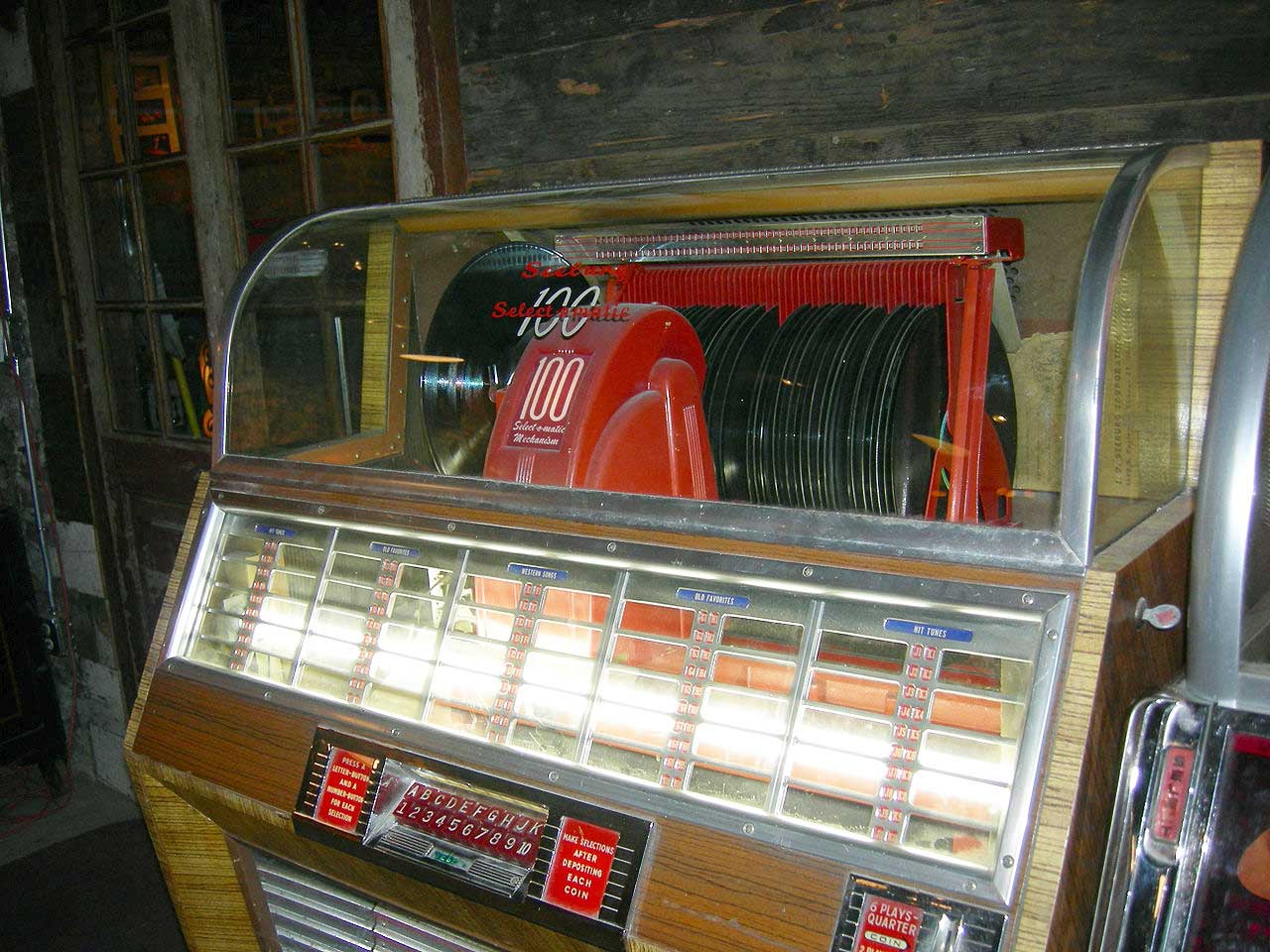
Seeburg Select-O-Matic Jukebox
The Seeburg Select-O-Matic Jukebox, which handles up to 50 records and is able to play both sides. The Select-O-Matic hit the market in 1949. (Image courtesy of The Men’s Cave)
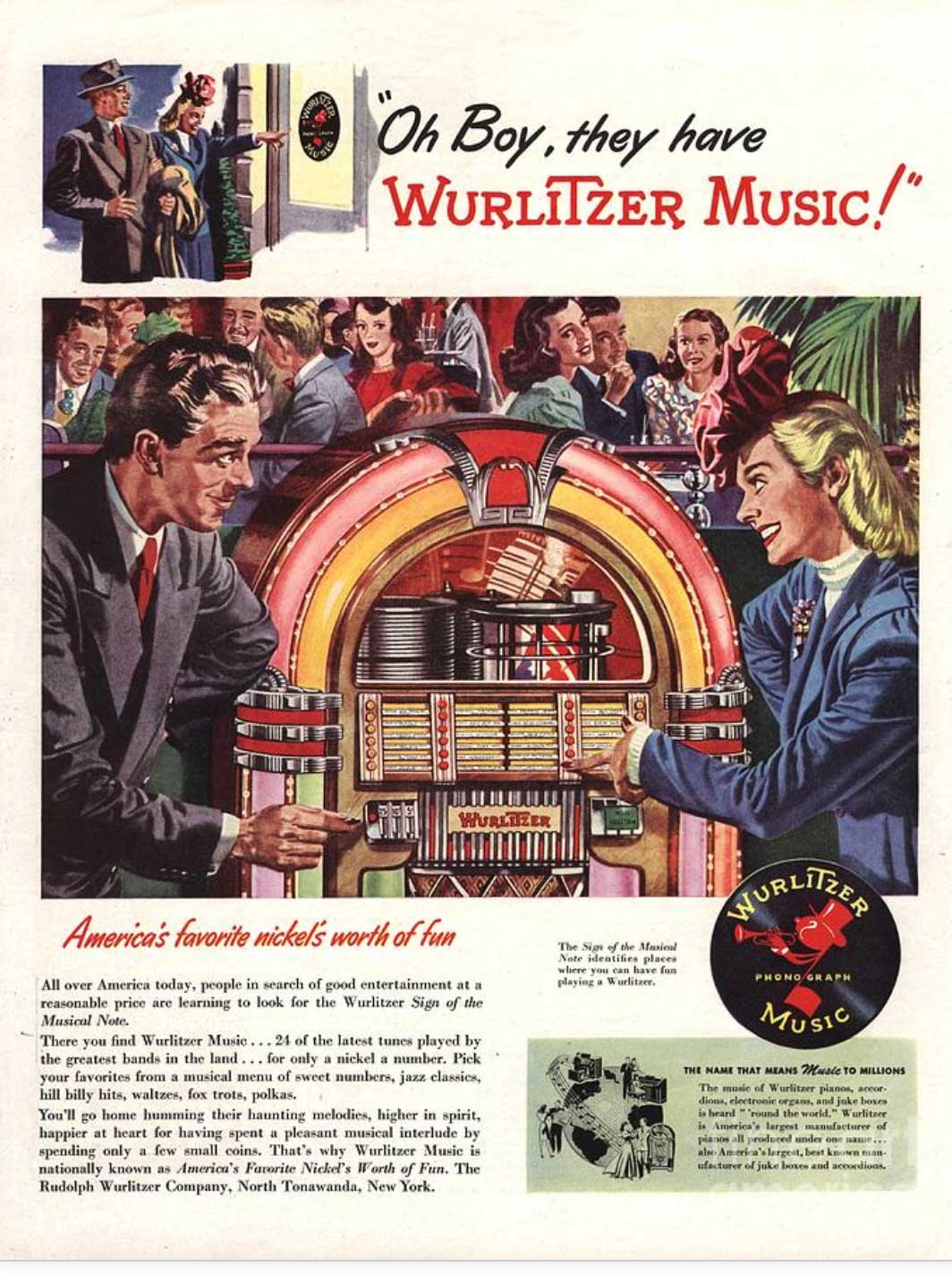
Wurlitzer advertisement from 1946
A Wurlitzer advertisement from 1946. (Image courtesy of Fine Art America)
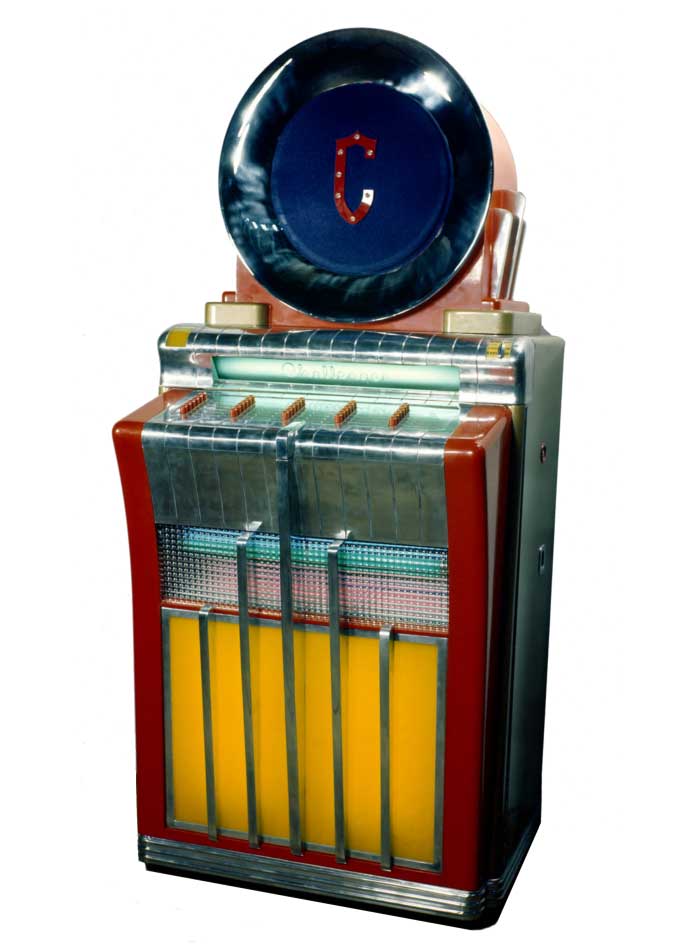
Challenge Industries’ Challenger ’47 jukebox
Little is known about Challenge Industries’ Challenger ’47 jukebox, designed in 1946. Only three units were completed before the idea was scrapped, making that model ultra rare. (Image courtesy of Jukebox History)
“At the 1938 Jukebox Convention in Chicago Seeburg unveiled their new machine – the ‘Symphonola.’ One of the company’s designers, Nils Miller, had been experimenting in translucent plastics for the casing and had come up with the first light-up jukebox,” writes jukebox historian David van Etten on his website, Jukebox History. “The plastic panels had low wattage bulbs behind them, lighting them up and making the phonograph ‘glow.’ This design approach was such an instant success that many of the other companies at the convention returned to their new machines and changed the casing.”
The names of Seeburg jukebox models sounded better fit for fancy automobiles than music-playing devices – ‘the Gem,’ ‘the Crown,’ ‘the Plaza,’ and ‘Regal,’ just to name a few.
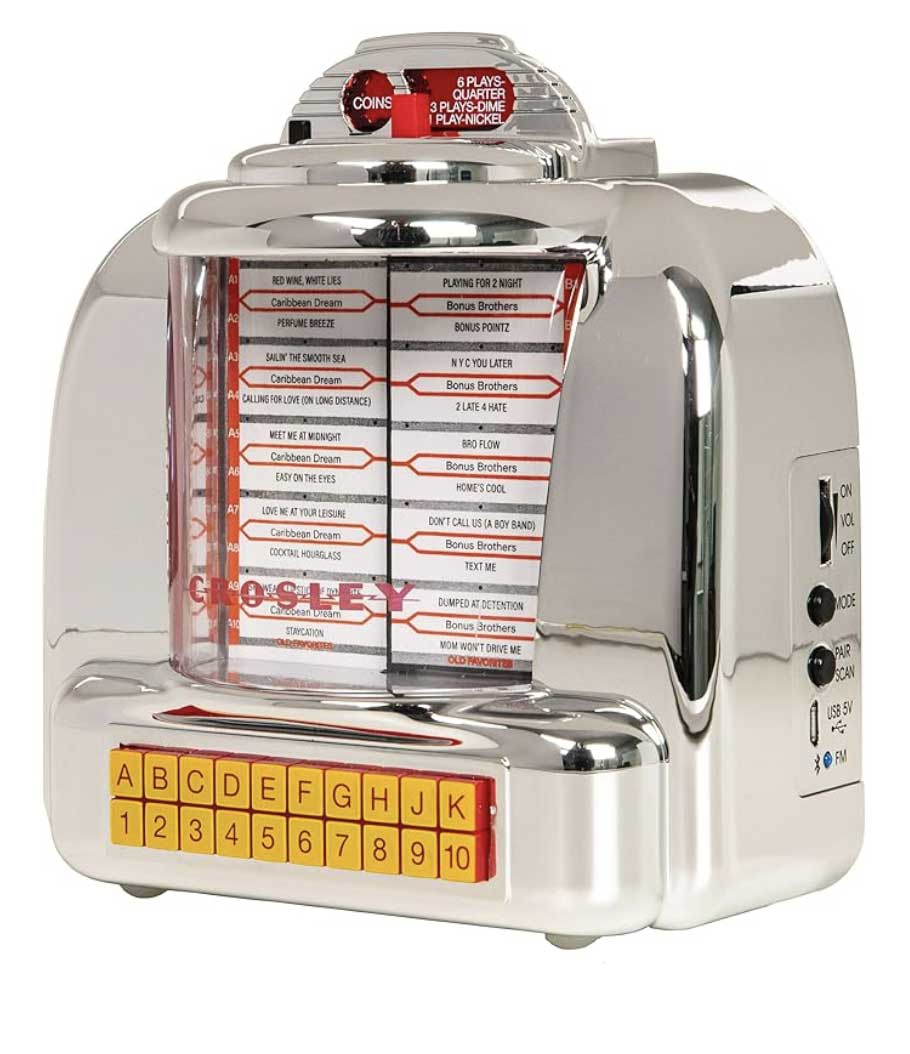
Crosley Diner Mini Tabletop jukebox
Digital jukeboxes like this Crosley Diner Mini Tabletop jukebox allow the user to connect their smart phone to an old-style tabletop jukebox like the ones found in diners in the 1950s. (Image courtesy of amazon.com)
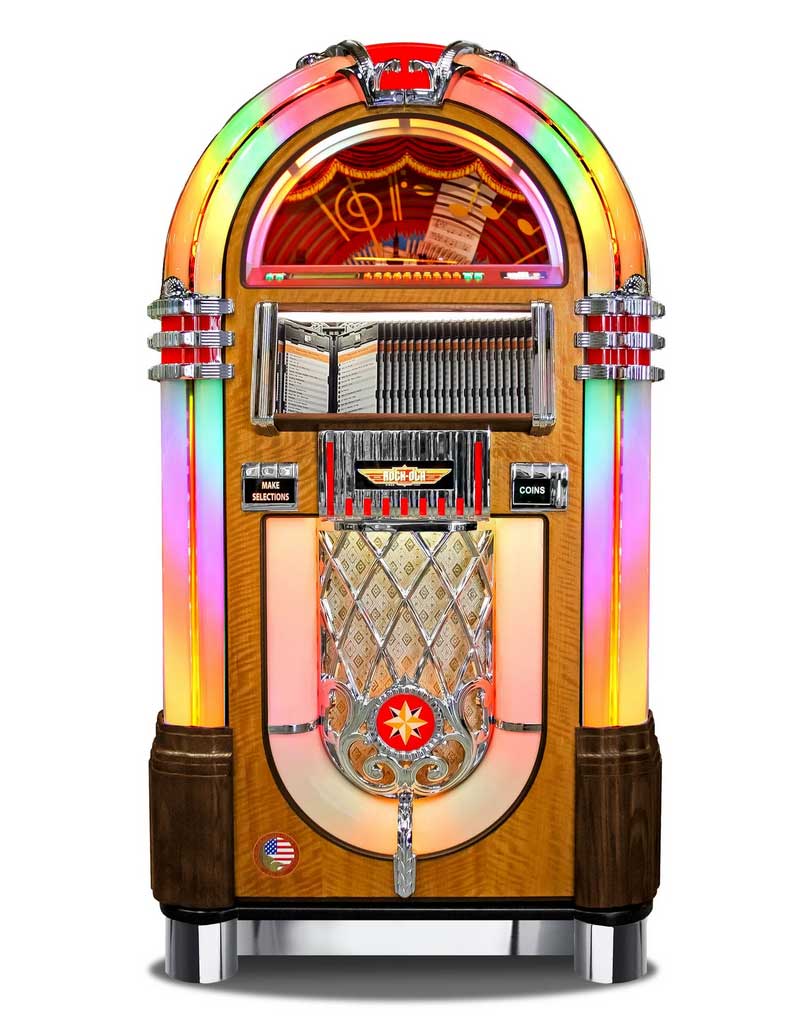
Rockola
Rockola was one of the big three jukebox companies competing for market dominance in the 1940s and ‘50s. This beautifully reproduced Rock-Ola Series V Bubbler CD Jukebox would be a perfect addition to any music lover’s home. (Image courtesy of rock-ola.com)
It’s party time
Meanwhile, Wurlitzer jukeboxes sold especially well starting with the repeal of Prohibition in late 1933.
“The demand for coin-operated music was about to explode,” van Etten writes. “It did, and by 1937, Wurlitzer had sold over 100,000 phonographs.”
The industry would become inundated with manufacturers by the late 1930s, with companies like AMI, Mills, Rockola, Aireon, and Chicago Coin joining the fray. Like radio and television technologies, jukebox production grinded to a halt when the United States entered World War II, but when production resumed in the late 1940s, the numbers showed that their popularity was only growing – by the end of the decade, in fact, more than 75% of the records produced in the U.S. went into jukeboxes. The trio of Wurlitzer, Seeburg, and Rockola dominated the industry.
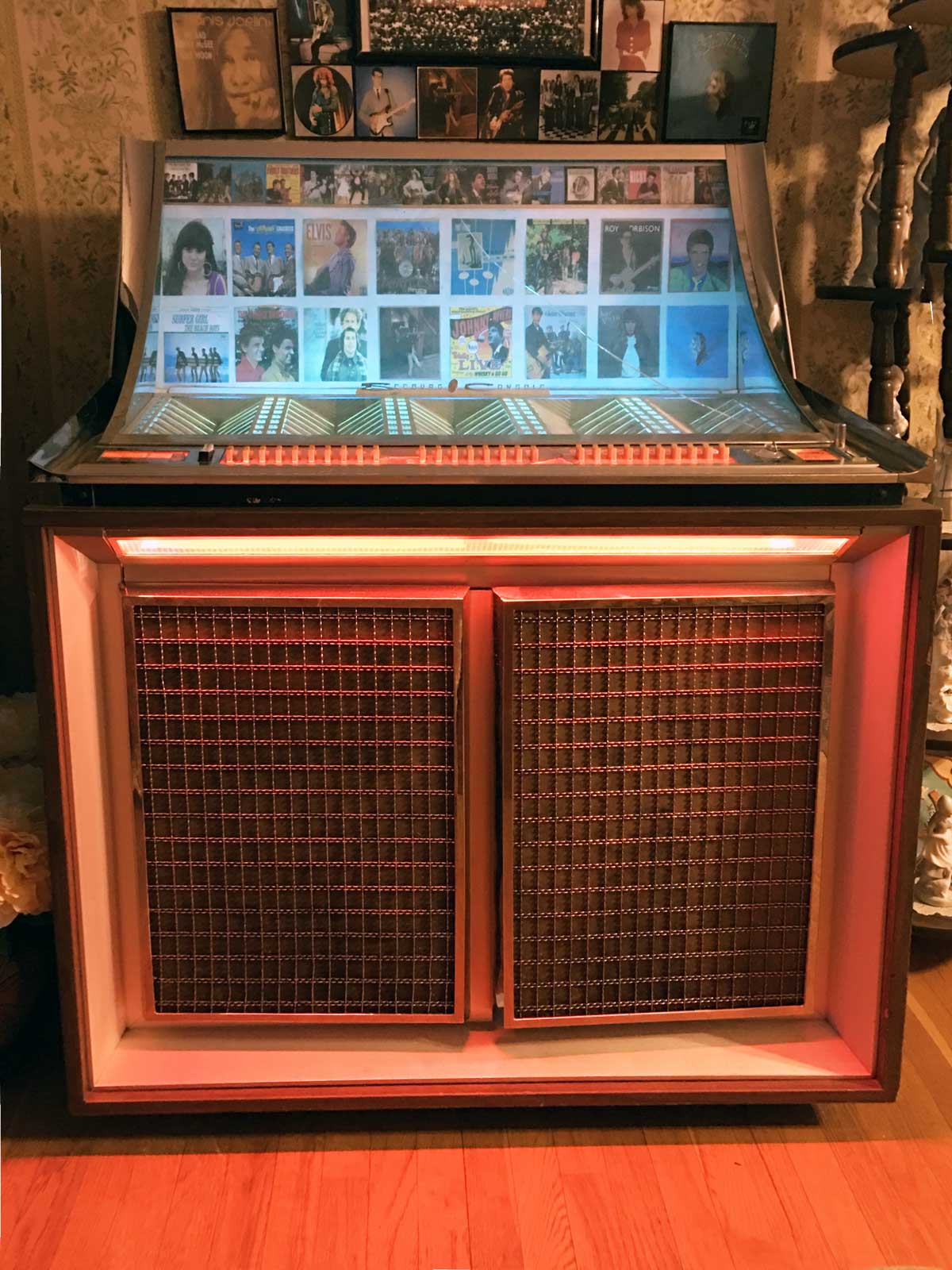
1961 Seeburg LP Console jukebox
Our cover story was inspired by this photo sent in by a long- time reader and subscriber. This 1961 Seeburg LP Console jukebox is one of the vintage jukeboxes owned by the Wards of Overland Park, KS. (Image courtesty of P.D. Ward)
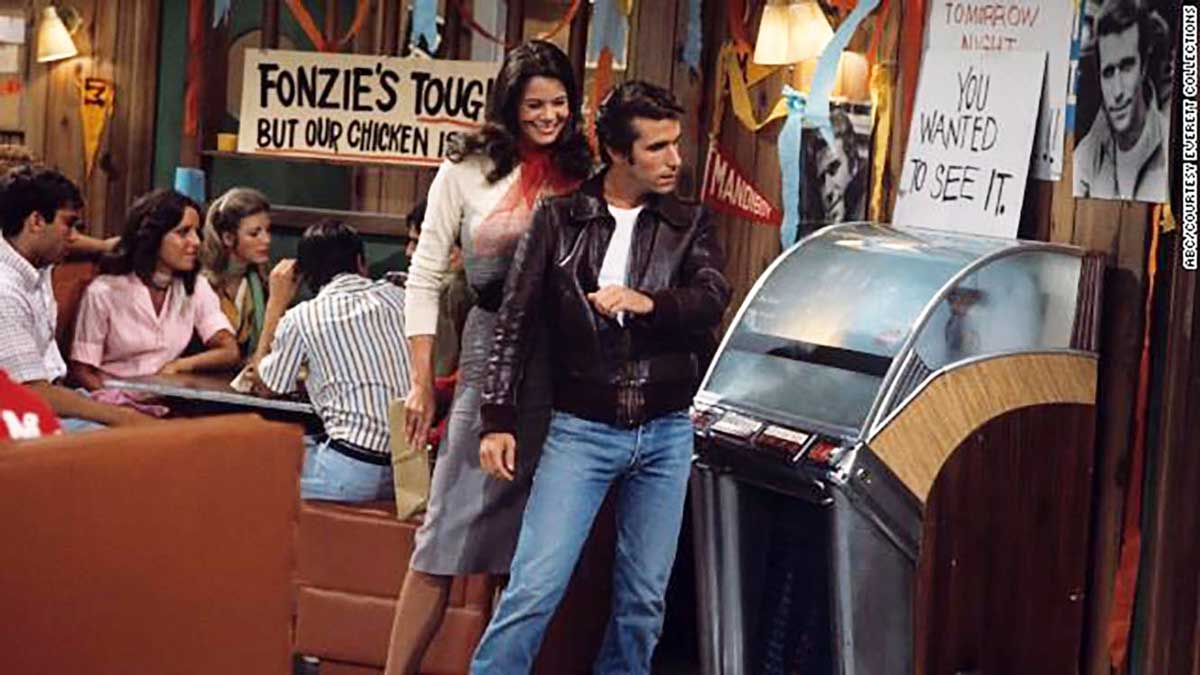
Jubeboxes --- pop culture phenomenon
Jukeboxes remained a pop culture phenomenon throughout midcentury America, including in films and TV shows like “Happy Days.” (Image courtesy of Facebook)
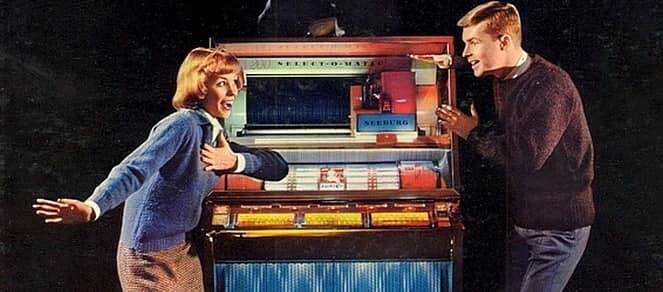
Seeburg’s Select-O-Matic
More fun with Seeburg’s Select-O-Matic. Multiple jukebox groups exist on social media, allowing collectors to buy, sell, and discuss renovations and repairs together. (Image courtesy of Facebook)
Jukebox fever hit its zenith with the arrival of the 1950s, according to Wonderopolis, when an estimated 750,000 jukeboxes were playing the hits across the U.S. By the end of that decade, however, their popularity began to wane as the sounds of the smaller 45-RPM, introduced by RCA Victor in 1949, began to reach the ears of Americans.
The last one standing
Today, Rockola is the last remaining jukebox factory in the country, still pumping out units for 1950s-themed restaurants like Johnny Rockets.
Grand America Jukebox, a vendor located in St. Louis, MO, sells and restores both new and vintage jukeboxes, along with pinball machines, vintage soda machines, and arcade games, among others. According to Grand Amer-ica’s website, used jukeboxes flooded the market after the 2008 recession; with not as many buyers interested in these luxury items, the values have decreased over the nearly two decades since.
On eBay, vintage tabletop jukeboxes generally are sold for a few hundred dollars; larger models can go for several thousand, depending on condition. Just about every replacement part is available on eBay, too, and at Grand America Jukebox.
Sure, today’s modern jukeboxes come ready to connect to Bluetooth and pump out digital tunes, there’s still a place for records and those colorful devices that spin them, says Alexander Walder-Smith, owner of The Game Room Co., which now owns Rockola.
“The revival of vinyl records has inspired nostalgia for jukeboxes,” he explains in an article on therevolverclub.com. “People, including younger generations, appreciate the tactile, personal experience of vinyl as a counter to the digital age.”


